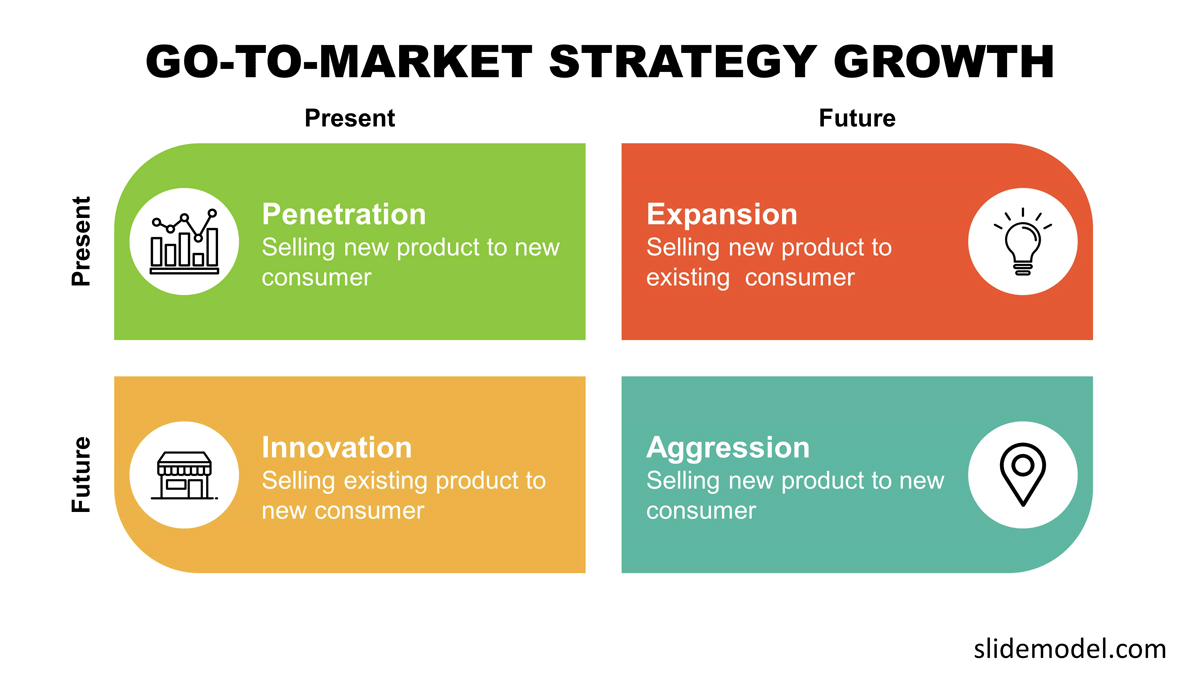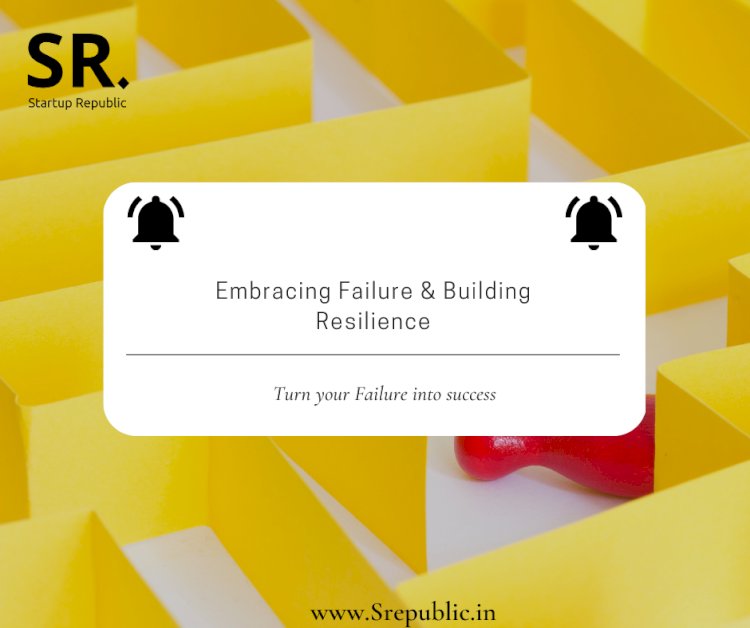
From Idea to Impact: Crafting a Winning Go-to-Market Strategy for Your Innovative Product
You’ve poured your heart and soul into developing an innovative product – something truly new, something that solves a problem in a unique way, or creates a brand new opportunity. Congratulations! But now comes the next big challenge: how do you get this amazing innovation into the hands of the right people? How do you make sure it doesn’t just sit on a shelf, but truly makes an impact?
The answer lies in a robust Go-to-Market (GTM) Strategy.
Think of your GTM strategy as your detailed roadmap for introducing a new product or service to the market. It’s not just about launching; it’s about how you’ll reach your target customers, how you’ll communicate your unique value, and how you’ll build sustainable success. For innovative products, a well-defined GTM strategy is even more critical because you’re often educating the market, creating demand, and proving your concept from scratch.
This comprehensive guide will break down the essential components of creating a winning GTM strategy, making it easy for beginners to understand and apply.
What Exactly is a Go-to-Market (GTM) Strategy?
At its core, a Go-to-Market (GTM) strategy is an action plan that details how a company will launch a new product or service into the market to reach its target customers and achieve its business goals. It encompasses every step from initial market research to post-launch optimization.
Why is it so crucial for Innovative Products?
- No Existing Playbook: Unlike established products, your innovation often doesn’t have a clear market segment or competitor to benchmark against. You’re carving out a new path.
- Educating the Market: You might need to explain why your product is needed, or how it solves a problem people didn’t even realize they had.
- Building Trust: Being new means you have to work harder to build credibility and trust with early adopters.
- Efficient Resource Allocation: A clear strategy ensures you spend your time, money, and effort where it will have the most impact, avoiding costly missteps.
- Measurable Success: It provides a framework to track progress and adjust course as needed.
Phase 1: Laying the Foundation – Understanding Your Product, Market, and Customer
Before you even think about shouting from the rooftops, you need to do your homework. This foundational phase is about deep understanding.
1. Define Your Innovative Product and Its Core Value
This might seem obvious, but it’s crucial to articulate clearly.
- What is your product? Describe it simply, as if to a child.
- What problem does it solve? Every great product solves a pain point or fulfills a desire. For innovative products, you might be solving a problem people didn’t even know they had!
- What makes it unique? This is your Unique Selling Proposition (USP). Is it faster, cheaper, more efficient, more beautiful, or does it do something completely new? For an innovative product, this is your secret sauce.
- What value does it bring to the customer? Go beyond features. What are the benefits? (e.g., "It’s not just a drone, it gives you a bird’s-eye view of your property for security and peace of mind.")
Actionable Tip: Create a simple "elevator pitch" for your product. Can you explain its value in 30 seconds or less?
2. Identify Your Target Audience: Who Needs Your Innovation?
This is perhaps the most critical step. You can’t sell to everyone, especially with an innovative product that might appeal to a specific group of early adopters.
- Demographics: Who are they? (Age, gender, location, income, education, occupation).
- Psychographics: What are their beliefs, values, interests, lifestyles? What motivates them?
- Pain Points & Needs: What challenges do they face that your product addresses? What are their aspirations?
- Behavioral Data: How do they typically buy products like yours? Where do they get information? Are they early adopters or late majority?
- Create Buyer Personas: Give your ideal customers names, backstories, and even pictures. This makes them feel real and helps you tailor your messaging.
- Example Persona: "Tech-Savvy Tina" – 35, works in IT, loves new gadgets, frustrated by slow home Wi-Fi, spends evenings researching smart home solutions, active on tech forums.
Actionable Tip: Don’t just guess! Conduct surveys, interviews, and focus groups with potential customers. Use tools like Google Analytics (if you have an existing website) or social media insights to understand your audience.
3. Conduct Thorough Market Research and Competitive Analysis
Even if your product is truly innovative, there are always alternatives or indirect competitors.
- Market Size & Trends: How big is the potential market for your product? Is it growing, shrinking, or stable? Are there any emerging trends that could impact your success?
- Direct Competitors: Who offers similar solutions? What are their strengths and weaknesses? How do they price their products?
- Indirect Competitors: What are alternative ways customers solve the problem your product addresses? (e.g., If you sell an AI-powered personal assistant, a human assistant is an indirect competitor).
- SWOT Analysis:
- Strengths (Internal: What you do well)
- Weaknesses (Internal: Where you could improve)
- Opportunities (External: Favorable market conditions)
- Threats (External: Challenges from competitors or market shifts)
Actionable Tip: Don’t be afraid to learn from competitors. What are they doing well? Where are their gaps that your innovation can fill?
Phase 2: Crafting Your Message and Offer – What to Say and How Much to Charge
Once you know your product and your audience, it’s time to craft the story and the price tag.
4. Develop Your Value Proposition and Positioning
This is where you articulate why your ideal customer should choose your product over any other alternative.
- Value Proposition Statement: A clear, concise statement that explains what you do, for whom, and why it’s better or different.
- Formula: For [Target Customer], who [has this problem], [Your Product] is a [Product Category] that [provides this unique benefit/solution] because [your unique differentiator].
- Example: "For busy small business owners who struggle with managing their social media, our AI-powered content generator is a marketing tool that creates engaging posts in minutes, because it learns your brand voice and audience preferences automatically."
- Positioning: How do you want your product to be perceived in the minds of your target audience relative to competitors? Are you the premium choice, the affordable option, the easiest to use, or the most advanced? For an innovative product, you might be positioning yourself as the future or the game-changer.
Actionable Tip: Test your value proposition with potential customers. Do they understand it? Do they resonate with it?
5. Determine Your Pricing Strategy
Pricing an innovative product can be tricky because there might not be direct benchmarks. You need to balance perceived value, costs, and market acceptance.
- Cost-Plus Pricing: Calculate your production cost and add a desired profit margin. (Simple, but ignores market value).
- Competitive Pricing: Price similar to or in relation to competitors. (Difficult if your product is truly new).
- Value-Based Pricing: Price based on the perceived value your product delivers to the customer. For innovative products, this can be high if you solve a major problem. (e.g., If your software saves a company millions, it’s worth a significant investment).
- Penetration Pricing: Set a low initial price to quickly gain market share. (Good for rapid adoption, but can devalue your product).
- Skimming Pricing: Set a high initial price to capture early adopters and then gradually lower it over time. (Common for truly innovative tech products).
- Freemium/Subscription: Offer a basic version for free, then charge for premium features or ongoing access. (Great for software or digital services).
Considerations for Innovative Products:
- Willingness to Pay: How much are your target customers willing to pay for this new solution?
- Perceived Risk: New products often carry perceived risk. Does your pricing reflect that, or does it offer an incentive for early adoption?
- Future Pricing: How will your pricing evolve as the market matures and competition enters?
Actionable Tip: Don’t just pick a number. Test different pricing models if possible (e.g., through surveys or beta programs).
Phase 3: Reaching Your Audience – Channels and Tactics
Now that you know what to say and how much to charge, it’s time to figure out how you’ll get your message out and sell your product.
6. Develop Your Marketing Strategy
This is about creating awareness, generating interest, and driving demand. For innovative products, education is key.
- Content Marketing: Create valuable content that educates your audience about the problem your product solves and how it works.
- Blog posts, articles, whitepapers, e-books
- Tutorial videos, demos, webinars
- Case studies and testimonials
- Infographics
- Search Engine Optimization (SEO): Optimize your website and content to rank high in search engine results when people search for solutions related to your product.
- Social Media Marketing: Identify which platforms your target audience uses most (LinkedIn for B2B, Instagram/TikTok for visual products, etc.) and engage them there.
- Paid Advertising (PPC/Social Ads): Targeted ads on Google, social media, or other platforms to reach specific demographics and interests.
- Public Relations (PR): Get media coverage (tech blogs, industry publications, news outlets) to build credibility and reach a wider audience. This is particularly effective for truly innovative products.
- Email Marketing: Build an email list to nurture leads, share updates, and announce launch details.
- Events & Demos: For complex or physical innovative products, live demonstrations at trade shows, conferences, or even online webinars can be incredibly effective.
- Influencer Marketing: Partner with individuals who have influence over your target audience.
Key for Innovative Products: Focus on storytelling. Help people visualize how their lives or work will improve with your product.
7. Define Your Sales Strategy
How will customers actually buy your product?
- Direct Sales: Your own sales team sells directly to customers. (Often preferred for high-value, complex B2B innovative products, as it allows for direct feedback).
- Indirect Sales (Partners/Channels): Selling through distributors, resellers, retailers, or strategic partners. (Good for scaling, especially for consumer innovations).
- Online Sales (E-commerce): Selling directly through your website. (Essential for most products today).
- Hybrid Model: A combination of the above.
Considerations:
- Sales Cycle: How long will it take from initial contact to purchase? Innovative products might have longer sales cycles due to the need for education.
- Sales Enablement: What tools, training, and materials will your sales team (or your partners) need to effectively sell your unique product?
- Customer Support: How will you support customers post-purchase, especially with a new type of product?
Phase 4: The Launch and Beyond – Execution, Measurement, and Iteration
You’ve planned meticulously. Now it’s time to execute and learn.
8. Develop Your Launch Plan
The launch is a critical moment, but it’s just one point in your GTM journey.
- Pre-Launch Activities:
- Beta Testing: Get early users to test your product, gather feedback, and fix bugs. This also creates early advocates.
- Build Hype: Teaser campaigns, press releases, social media countdowns.
- Sales Training: Ensure your sales team (or partners) are fully trained and ready.
- Website & E-commerce Readiness: Ensure everything is functional and ready for traffic.
- Customer Support Preparedness: FAQs, help articles, trained support staff.
- Launch Day:
- Execute your planned marketing campaigns.
- Monitor social media and news for mentions.
- Be ready to respond to inquiries and feedback.
- Post-Launch Activities:
- Monitor Performance: Track your KPIs (Key Performance Indicators).
- Gather Feedback: Continue to solicit feedback from early customers.
- Iterate: Use insights to improve the product, messaging, and sales process.
Actionable Tip: Plan for potential issues. What’s your contingency plan if something goes wrong?
9. Define Your Metrics for Success (KPIs) and Plan for Iteration
A GTM strategy isn’t a one-and-done deal. It’s a living document that evolves as you learn.
Key Performance Indicators (KPIs) to Track:
- Sales Revenue: Total sales generated.
- Customer Acquisition Cost (CAC): How much does it cost to acquire one new customer?
- Conversion Rates: Percentage of website visitors who become leads, or leads who become customers.
- Website Traffic: How many people are visiting your site?
- Lead Generation: How many new leads are you getting?
- Customer Lifetime Value (CLTV): The total revenue you expect to generate from a customer over their relationship with your company.
- Customer Retention Rate: How many customers do you keep over time?
- Brand Awareness: Mentions in media, social media engagement, direct searches for your brand.
- Product Usage: How are customers using your product? Which features are most popular?
Iterate and Optimize:
Regularly review your KPIs. If something isn’t working, don’t be afraid to pivot. This is especially important for innovative products where the market might not react as expected. Be agile, learn from your data, and continuously refine your strategy.
Conclusion: Your Roadmap to Innovation Success
Creating a Go-to-Market strategy for your innovative product might seem daunting, but by breaking it down into these manageable steps, you can build a clear, actionable plan. It’s the bridge between your brilliant idea and its impact on the world.
Remember, innovation is about pushing boundaries, and so is your GTM strategy. Be prepared to educate, adapt, and listen to your customers. With a well-thought-out roadmap, your innovative product won’t just launch – it will thrive.
Now, go forth and make your innovation a success!



Post Comment